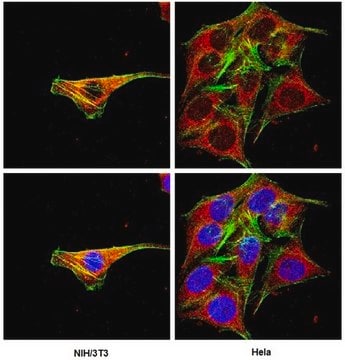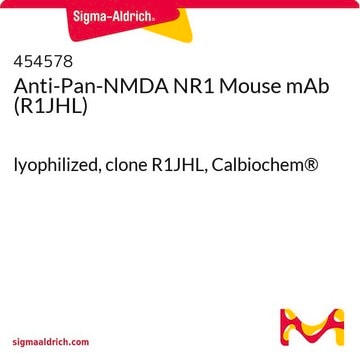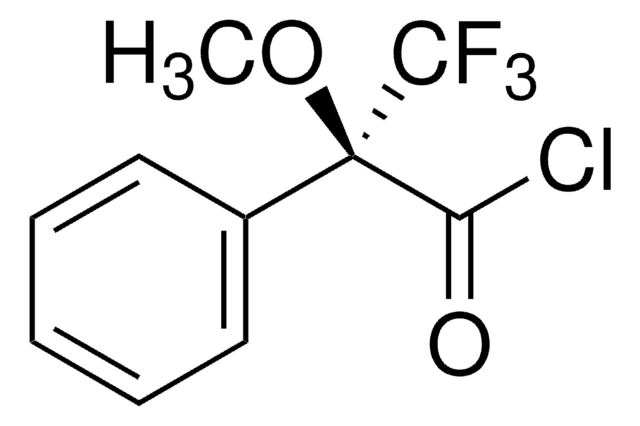69050
Anti-Cre Antibody
Novagen®
Sinônimo(s):
Cre Recombinase Antibody
Faça loginpara ver os preços organizacionais e de contrato
About This Item
Código UNSPSC:
12352203
NACRES:
NA.43
Produtos recomendados
forma do anticorpo
purified antibody
Nível de qualidade
tipo de produto de anticorpo
primary antibodies
fabricante/nome comercial
Novagen®
condição de armazenamento
OK to freeze
avoid repeated freeze/thaw cycles
Condições de expedição
wet ice
temperatura de armazenamento
−20°C
modificação pós-traducional do alvo
unmodified
Descrição geral
Recombinase cre (UniProt: P06956; also known as Cre) is encoded by the cre gene (Gene ID: 2777477) in Escherichia phage P1 (Bacteriophage P1). Cre (Causes recombination with Cyclization recombinase), a 38 kDa DNA recombinase of the ′phage′ integrase family, is derived from the P1 bacteriophage. It catalyzes site-specific recombination and is highly specific for a 34-bp DNA sequence motif called loxP (locus of X-over P1) found in P1 DNA. The loxP site is composed of a variable asymmetric 8-bp sequence in between two sets of 13-bp palindromic sequences (ATAACTTCGTATA-NNNTANNN-TATACGAAGTTAT). Two cre recombinase proteins, each bind to one of the two 13-bp palindromic sequences at a loxP site, form a dimer. This dimer then binds to a second dimer on another loxP site to form a tetramer. The two sites joined by the tetramer are parallel in orientation and the double stranded DNA is cut at both loxP sites. The strands are then rejoined with DNA ligase. Because the Cre gene and loxP sites are not native to most species, they are often introduced into target cells or tissues and employed as a means to precisely control the expression of genes both in cultured cells in vitro and in animals in vivo.
Specific, sensitive detection of Cre recombinase in cells and cell lysates
Supplied as purified rabbit polyclonal antibody in buffer containing 0.1 M Tris-Glycine, 0.15 M NaCl, pH 7.4 with 0.05% sodium azide and 50% glycerol.
Evaluated by Western Blotting with Recombinant Cre-His.
Western Blotting Analysis: Representative lot data.Recombinant Cre-His loaded at 20 ng/lane (Lane 1) and 10 ng/lane (Lane 2) was probed with Cat. No. 69050-3, Anti-Cre (1:10,000 dilution). Proteins were visualized using a Donkey Anti-Rabbit secondary antibody conjugated to HRP and a chemiluminescence detection system. Arrow indicates Cre (~39 kDa).
Evaluated by Western Blotting with Recombinant Cre-His.
Western Blotting Analysis: Representative lot data.Recombinant Cre-His loaded at 20 ng/lane (Lane 1) and 10 ng/lane (Lane 2) was probed with Cat. No. 69050-3, Anti-Cre (1:10,000 dilution). Proteins were visualized using a Donkey Anti-Rabbit secondary antibody conjugated to HRP and a chemiluminescence detection system. Arrow indicates Cre (~39 kDa).
Advertência
Toxicity: Standard Handling (A)
Informações legais
NOVAGEN is a registered trademark of Merck KGaA, Darmstadt, Germany
Not finding the right product?
Try our Ferramenta de seleção de produtos.
Código de classe de armazenamento
10 - Combustible liquids
Classe de risco de água (WGK)
WGK 1
Ponto de fulgor (°F)
Not applicable
Ponto de fulgor (°C)
Not applicable
Certificados de análise (COA)
Busque Certificados de análise (COA) digitando o Número do Lote do produto. Os números de lote e remessa podem ser encontrados no rótulo de um produto após a palavra “Lot” ou “Batch”.
Já possui este produto?
Encontre a documentação dos produtos que você adquiriu recentemente na biblioteca de documentos.
Ken-Ichiro Kuwako et al.
Cell reports, 24(11), 2808-2818 (2018-09-13)
Strictly controlled dendrite patterning underlies precise neural connection. Dendrite self-avoidance is a crucial system preventing self-crossing and clumping of dendrites. Although many cell-surface molecules that regulate self-avoidance have been identified, the signaling pathway that orchestrates it remains poorly understood, particularly in mammals. Here
Fei Gao et al.
Proceedings of the National Academy of Sciences of the United States of America, 103(32), 11987-11992 (2006-08-01)
Mutation of the transcription factor and tumor suppressor gene WT1 results in a range of genitourinary anomalies in humans, including 46,XY gonadal dysgenesis, indicating that WT1 plays a critical role in sex determination. However, because knockout of Wt1 in mice
Feng Li et al.
Frontiers in genetics, 3, 255-255 (2013-01-08)
The tongue epithelium is one of the most rapidly self-renewing tissues in adult mammals. Multiple stem cell populations are currently believed to exist in tongue epithelia. Keratin 14 (K14) positive cells differentiate into either lingual epithelia or lingual papillae, while
Jean-Sébastien Rougier et al.
Frontiers in physiology, 10, 834-834 (2019-07-25)
Background: In cardiac ventricular muscle cells, the presence of voltage-gated sodium channels Nav1.5 at the lateral membrane depends in part on the interaction between the dystrophin-syntrophin complex and the Nav1.5 C-terminal PDZ-domain-binding sequence Ser-Ile-Val (SIV motif). α1-Syntrophin, a PDZ-domain adaptor
Amanda M Ackermann et al.
Cell metabolism, 28(5), 787-792 (2018-07-31)
Recent reports identified activation of the GABA signaling pathway as a means to induce transdifferentiation of pancreatic α cells into β cells. These reports followed several previous studies that found that α cells were particularly well suited to conversion into
Nossa equipe de cientistas tem experiência em todas as áreas de pesquisa, incluindo Life Sciences, ciência de materiais, síntese química, cromatografia, química analítica e muitas outras.
Entre em contato com a assistência técnica








